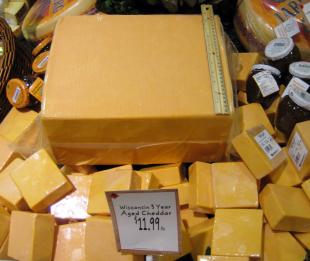Our previous post Everything That Can Be Digital, Will Be examines the migration of corporate training from traditional instructor-led training to elearning in the context of the digitization of other forms of media, like news, television and music. The conclusion from the data is obvious: Content that can be digital, whether news stories or songs, will be, because digital content is portable, flexible, convenient and affordable.
The data also reveal a second point. Not only do consumers want their content to be digital, they want to consume it on their own terms. Content buyers want access to a granular, on-demand content delivery model, where they will pay for only what they specifically want to consume, on their own schedule.
We Want Our Content Chunked
In the past, consumers subscribed to cable packages with hundreds of channels they didn’t watch and bought music CDs filled with songs they didn’t like. They selected books from whatever their local bookstore stocked, and read their news from their local newspaper. Buyers know there’s a better way, and they can’t be bullied into that old-fashioned kind of content package anymore.
Access to books, music, news and entertainment through the Internet has empowered the consumer. Through sites like iTunes, Hulu and Amazon, consumers purchase only the specific chunks of content they wish to enjoy. For example, CD sales have dropped by more than 40% in the last 5 years for a simple reason: listeners have access to discrete songs on iTunes and its analogs. Music listeners can pay $.99 or $1.19 for the one song they want, rather than $15.99 for an entire album. This ability to purchase desired chunks of content will ultimately render the old-fashioned album obsolete.
This is part one of the content delivery revolution. Successful content will be chunked. Consumers want to pick and choose chunks of content, and they want to pay for only what they want to consume.
And We Want Content When We Want It
The number of cable subscribers in the United States started to decline in 2008. What happened in 2008? Netflix began to offer streaming content, and Hulu released its public beta. Those sites make it easy for consumers to stream television content to their computer or television.
As Netflix and Hulu commence their titanic struggle for dominance of the premium subscription market, consumers are leaving cable companies for the opportunity to create their own custom channels, with content from multiple authors delivered on a user-created schedule. Hulu recently launched Hulu Plus, which enables customers to pay $7.99 a month for the ability to watch their favorite programs on their own schedule, across diverse devices. As soon as Hulu or Netflix or ESPN can secure the rights to broadcast live sports, the cable companies will really be sweating.
As an aside, another great example of the inexorable transition to streaming television content is the new Apple Macbook Air. How did it get so skinny? No DVD drive.
Streaming digital content, whether radio shows or television programs, empowers the consumer to design their own entertainment schedule. This is part two of the build-your-own content package revolution: on-demand content consumption.
We Want our Learning like We Want Our 30 Rock
The best content delivery models are chunked and on-demand: They empower the consumer by enabling him or her to pay for specific chunks to be consumed on their own schedule. Just digitizing content is not enough. Napster, Kazaa, Limewire and their ilk are evidence that consumers will choose to pirate content if they can’t pay for it in a chunked and flexible manner. iTunes and Hulu Plus are great evidence that consumers are willing to pay for content if they are empowered to control its delivery.
What does this mean for learning? The consumer’s preference for chunked, on-demand content delivery applies to us too. Just like our entertainment, we must create chunks of learning and deliver it to learners in the most flexible way possible. If we want people to get the most out of training, don’t limit their development opportunities to a few in-house instructor-led classes or a couple of generic online courses.
Introduce your learners to the world’s marketplace of online learning opportunities. Give your colleagues access to diverse chunks of learning from a variety of authors. Don’t shut your learners in a classroom every Wednesday at 8 pm, either. Let them learn asynchronously, but give them opportunities to communicate and collaborate asynchronously as well. Make your elearning curriculum chunked and on-demand, and support your learners in creating their personal content package.
OpenSesame is the elearning marketplace that makes the chunked and on-demand elearning model possible. We embrace diversity in course authors and learning management systems, and we offer flexible purchasing and pricing options. We make sure your courses are accessible at any time.
We believe that we are facilitating the future of elearning through our open marketplace. Join us.
Photo Credit: Dylan Stiles.






